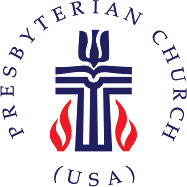I wrote a long post, tried to post it; and Blogger had eaten all of the post's text. It was blank. So, I will try to reconstruct it, sorry this is late.
I have read three books lately that are completely different, but each one has made me think about the other two. The three books are The Second Coming of the Church by George Barna, Jonathan Edwards: A Life, by George M. Marsden and Punk Munk: New Monasticism and the Ancient Art of Breathing by Andy Freeman and Pete Greig.
The Barna book is a discussion of what he thinks are the problems with the church in America and what he thinks we should do about it. The first part is pretty good. I generally think he has a pretty good grasp of what is going on -- and he should. His work is generally well researched, factual and well supported. It is the second part of the book that I have problems with. I don't mean to imply that there aren't some good ideas in this book. There are, and many of them could be useful in revitalizing existing congregations. To me, the problem with this book is that Barna seems to be trying to get back to the glory days of the 1950's and 1960's when church attendance was booming, pastors were politically and socially influential and churches were filled with all the right people.
I just don't know that the big building, big budget church model was ever all that successful. Of course, this assumes that church success is defined by the nurturing of dedicated committed Christians willing to lead lives of obedience and service. I tend to wonder if even 10% of the population of those churches had fit that description how different would this world be?
That question leads me to the Jonathan Edwards book. First of all, this book is well researched, well presented and should be read by anyone with an interest in the church of that time. Our concept of a church is really a direct descendant of the congregations of Edwards' day. I think it is a common idea that people in the first half of the 18th Century at least pretended to be pretty pious. Well, not exactly. In fact, Edwards spent a great deal of time concerned about the state of salvation in his Congregation. He was an influential leader during a period of significant spiritual renewal in New England, and he was very attentive to what did and did not make a difference in the spiritual lives of his congregation. Although, Edwards was a very effective pastor; I don't see that his effectiveness was connected to the church model. In fact, I am convinced that the big building, big budget model was no more effective then than it is now.
That leads me to the third book, Punk Monk. This is the least well written of the three books. It has a great topic with wonderful stories, but it lacks sparkle. It isn't that it is difficult to read, but it is a little too easy to put down. Punk Monk is the second book about the rise of the 24/7 prayer movement that started in England a few years ago. (The International website is www.24-7prayer.com , and the US website is www.24-7prayer.us .)
The 24-7 prayer contribution to the New Monasticism movement are places called boiler rooms. There are several in the U.S., England and quite a few in other parts of the world as well. This book is about the start of the boiler room idea. I am not saying that they have the answer to the future of the church. I am also not saying that this book is filled with ideas that will fit into an existing congregation. I am saying that it is a pretty different way of doing church that is worth reading.
So, what is the point of this blog post? If the goal of our education programs is to make committed Christians (including well informed, well educated ones), then how is what we teach and how we teach it influenced by our opinions of where the future of the church lies?
JusticeSeeker
JusticeSeekerOK@aol.com
Thursday, July 23, 2009
Subscribe to:
Post Comments (Atom)








5 comments:
And you write this on the same day that the Church of England announces two-for-one weddings & baptisms together...the parents get married and their kids get baptized on the same day, at the same service...
The Church is really scrambling for acceptance...
Find the story at
http://www.theaustralian.news.com.au/story/0,25197,25827600-12335,00.html
I like the idea of wedding ceremonies as part of a worship service. We had a full service of worship at our wedding, but I think that including a wedding ceremony in a regular weekly service is even better.
(I know this wasn't the point of your comment, but I do like the focus of a wedding ceremony as part of another service rather than an end of its own, which just encourages focus on the whole My Big Day wedding industry madness.)
Sarahlynn, they're taking the baptism out of the Sunday morning worship service and putting it into the drunken Saturday afternoon wedding ceremony...I guess they could call it here comes the bride, beer, and baptisms
Drunken wedding ceremonies?! Yikes.
I enjoyed the Jonathan Edwards bio very much and agree with you that it is very instructive to be reminded what the realities of the church of his day were. Tried to read the Barna book but pooped out on it--think its because I'm weary of analysis/diagnosis/prescriptions of the modern church.
I hadn't heard of Punk Monk until you recommended it and just started it. It looks interesting!
Post a Comment